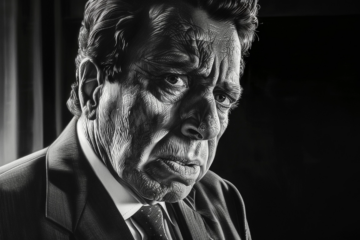In 33% White New York City, the Police Department Just Admitted the Secretive Gang Database is 99% Non-White

We were warned about a rising tide of color almost a century ago.
THE CIVILIZATION White people built in the United States of America is now being capsized by the tide of color overwhelming the western world. [New York City’s Gang Database Is 99% People of Color, Chief of Detectives Testifies, Juvenile Justice Information Exchange, June 14, 2018]:
NEW YORK CITY — Ninety-nine percent. The number sent an audible gasp throughout the City Council chamber. Chief of Detectives Dermot F. Shea had just read off the percentage of people of color on the NYPD’s controversial — and until now — largely secretive gang database.
Shea was talking publicly for the first time about one of the New York Police Department’s most popular crime-fighting tools. He testified Wednesday before the City Council’s Committee on Public Safety in the database’s first comprehensive public examination.
Shea read the numbers from a stack of papers in front of him.
African Americans: 65 percent.
Non-white Hispanic: 24 percent.
Black Hispanic: 10 percent.
Shea said the gang database, whose number fluctuates as names are added and purged, stood at 17,441. Given those percentages, that means 17,267 of the individuals in the database are either black or Hispanic. Earlier in the morning critics rallied to protest the use of the database, saying it’s racist.
There are 1,460 people who are younger than 18 in the database. In response to questioning, Shea said there are 17 13-year-olds, 80 14-year-olds, 204 15-year-olds, 455 16-year-olds and 704 17-year-olds. “You can see how the number goes up as they get older,” he said. The average age of someone on the database is 27, he said.
The NYPD, which encompasses the largest detective bureau in the country, has no formal process for notifying parents whose children are in the database. But, he said, there are a number of informal ways that parents are alerted.
“I don’t want to make it seem like there is no interaction with the parents,” Shea said. “Nothing could be further from the truth.”
Youth officers assigned to precincts and to transit and housing units might talk to the parents during the course of an investigation and the topic might come up then.How does someone end up on the database, Public Safety Committee Chair Donovan Richards asked.
There are a number of ways, Shea said: One is what he described as self-admission.
This often happens on social media, where gang members may talk about their affiliation, he said. Another is through two independent sources who tell a member of the department. That name then needs to be vetted by investigators. Anyone can be a source of that information — friends, teachers, family or a confidential informant.
Finally, he said, gang investigators can identify the presence of gang literature, tattoos, colors, clothing and other means of what they think is an indication of gang affiliation.
The gang database was more than a bloodless policy discussion to him, Richards said: “When I was 14, I could have been in this database.”
In 2018, New York City is still a 33 percent White city.
Yet 99 percent of New York City secretive gang database is non-White.
Western civilization is drowning in a sea of color, racial groups incompatible with sustaining not only our way of life, but adhering to the standards of civilized life White people have set.
* * *
Source: Stuff Black People Don’t Like






For the last 16 years I have been a criminal defense investigator in the state and federal courts of San Diego County. Approximately 95% of my clientele have been Black or Hispanic.